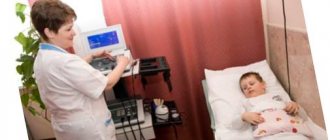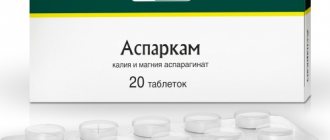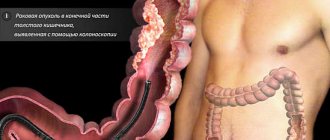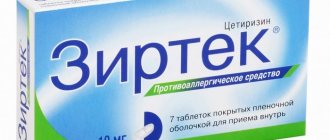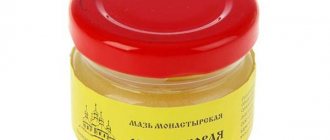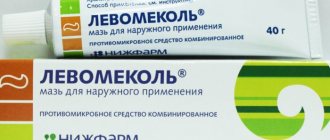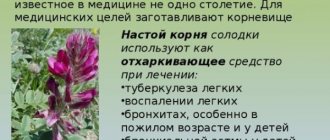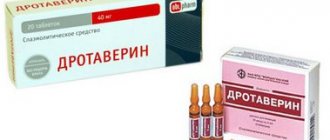Can a child be poisoned by Naphthyzin? Yes maybe. Even the simplest and safest-looking nasal drops can lead to serious consequences and harm the child’s health. Drug poisoning in children is not uncommon. Poisoning with vasoconstrictor drugs occurs especially often, due to the selection and use of medications by parents independently without a doctor’s prescription, also due to an incorrectly calculated dose of the drug and its incorrect storage.
During colds, runny nose, allergies, teething, there is a need to give drops to children. Parents use Naphthyzin because the drug has a quick effect, removes swelling of the nasal mucosa, and clears the respiratory passages.
In recent years, the number of Naphthyzin poisonings has increased. Mothers are increasingly going to the hospital with similar poisonings in their children.
Properties of the drug and dosage
Naphthyzine is used to treat runny nose in adults and children. The active substance is naphazoline from the group of anticongestants. Sanorin, Benyl are analogues of Naphthyzin.
This is a vasoconstrictor drug that, in contact with the nasal mucosa, relieves swelling. The vessels of the nasal cavity enlarge due to the inflammatory process in the respiratory tract. The action of the drops is aimed at reducing mucous membranes and regulating mucus secretions, expanding the nasal passages. The intake restores the functioning of the nasal mucosa and breathing.
Drops are used not only to treat symptoms of a runny nose. The drug is prescribed for diseases such as pharyngitis and sinusitis. Often used after surgery on the nose and sinuses. Adults are prescribed a solution of 0.1%. For children, a concentration of 0.05% is used.
Use of the drug by adults – 3 drops 4 times a day. Children under 15 years old take 2 drops in the morning and evening. After 15 years of age, children are recommended to take the same dosage as adults.
Analogues of the drug
If Naphthyzin is not suitable for the child or does not give the desired effect, doctors advise replacing it with more gentle drugs. Analogues of these drops are “Sanorin” and “Naphazoline Ferein”, which also contain the active ingredient naphazoline.
If for some reason Naphthyzin is contraindicated for a child, and there is swelling in the respiratory organ, doctors recommend other drugs. These include :
- "Nazol" spray;
- "Snoop";
- "Sanorinchik";
- drops "Dlyanos";
- "Aqualor baby"
If you need direct vasoconstrictor drops, you can use Vibrocil and Otrivin. These drugs are milder and suitable for children.
Before replacing Naphthyzin, consult your doctor. Self-medication can be dangerous for the child’s body.
Before using the medicine, you must consult a doctor. To the question “Can children have Naphthyzin?” - Doctors do not give a definite answer. But in some cases the drug may be irreplaceable. Its use for a child must be supervised by parents.
Author: Khatuna Gabelia, pediatrician, especially for lechim-gorlo.ru
When to use Naphthyzin
The drug relieves swelling of the nasal cavity well and blocks the secretion of mucus. Doctors prescribe Naphthyzin for the following diseases:
- During inflammatory processes on the mucous membrane - with nasopharyngitis.
- For infectious inflammation of the nasal sinuses - sinusitis.
- In case of inflammation of the larynx - laryngitis.
- Seasonal allergic rhinitis.
After operations in the nasal cavity, Naphthyzin is used to restore the mucous membrane.
The medicine should be instilled into the previously cleaned nasal passages. A child can swallow the product, so special turundas with drops should be used. It is recommended to leave it in the nostril for 2 minutes and then remove it.
The drug should be stored in the refrigerator. Before instillation, you will need to wait 30 minutes for the medicine to warm to room temperature.
An adult uses the drops for no longer than 7 days. Treatment for a child lasts 4 days. It is permissible to reuse the product only after 14 days.
Composition and purpose of Naphthyzin
The active ingredient of the anticongestive drug, alpha-adrenergic agonist, or more simply, Naphthyzin vasoconstrictor drops, is naphazoline. The composition contains purified water and boric acid as excipients.
The medicine has vasoconstrictor properties, quickly reduces swelling of the nasal mucosa, exudation (discharge), hyperemia (redness).
The use of Naphthyzin is indicated for:
- acute colds or allergic rhinitis;
- sinusitis;
- eustachitis (inflammation of the auditory tube);
- to perform the rhinoscopy procedure.
Causes of overdose
Naphthyzin overdose occurs for several reasons. Poisoning occurs in the following cases:
- Nasal drops were used for a newborn child.
- In children, the use of a 0.1% solution provokes intoxication.
- When instilled through a dispenser, it is difficult to calculate the dose.
The cause of childhood poisoning with Naphthyzin lies in improper storage. The parent should closely monitor medications so that children do not use them on their own.
In adults, systematically exceeding the norm causes severe intoxication.
Signs of poisoning
In the reference book of the Medical Classification of Diseases (ICD-10), signs of intoxication are listed under the title “Poisoning with Naphthyzine, Naphazoline, Xylometazoline (in children).” ICD code – T48.5.
The active substance easily penetrates the blood, so exceeding the dose depresses the central nervous system.
Symptoms of Naphthyzin poisoning:
- State of apathy and drowsiness;
- The skin becomes pale;
- Blood pressure reaches low levels;
- Low body temperature is recorded;
- Profuse sweating;
- Unconscious state.
When a child is poisoned, the clinical signs appear more clearly and pronouncedly. Children become capricious and lethargic, often crying. Appetite decreases. There are sharp pains in the abdominal area and a gag reflex. They may lose consciousness, and cases of coma have been recorded. Therefore, doctors recommend that young children use special tampons to administer the medicine. This way you can avoid poisoning.
Children should not use drops to eliminate discharge that appears during teething and after vaccination. The drug should be used on the recommendation of a doctor and strictly following the recipe.
Stages of poisoning
Doctors distinguish three stages of drug intoxication. Depends on the amount of the substance received, the physiological and immune state of the victim.
- Mild intoxication is treated on an outpatient basis, but under the supervision of a doctor. The patient feels general weakness in the body, constantly wants to sleep, and is lethargic. Appetite decreases sharply. The skin becomes pale. A disturbance in the functioning of the heart muscle is recorded.
- Moderate severity of poisoning is dangerous for a child’s body. The victim feels muscle weakness and drowsiness. There are disturbances in the functioning of the cardiac system. Blood pressure drops sharply. The body temperature is low and the patient refuses to eat. Photophobia is recorded. Requires hospitalization in a medical facility.
- Treatment of severe intoxication takes place in a hospital. Heart rhythm is abnormal, blood pressure drops to the lowest limits. Significant disturbances are observed in the condition, and coma may occur. The skin becomes pale, hands and feet are cold.
First aid
At the first signs of Naphthyzine intoxication, it is recommended to call an ambulance. Before the doctors arrive, it is necessary to provide assistance to the victim.
It is required to measure body temperature and set pulse rate. Place the patient in bed and cover with a warm blanket. Prepare a warm drink - a weak infusion of tea, mineral water or Regidron solution. The victim must not be left alone. Measure pulse and blood pressure periodically.
The child needs to be calmed down and also put to bed, covered with a warm blanket. If there is a urge to vomit, lay him on his side. Provide plenty of warm drinks - it is better to give mineral water with dissolved Regidron. You cannot give milk or fermented milk products to drink - this can provoke rapid absorption of naphthazole into the blood.
The use of potassium permanganate for gastric lavage is prohibited. Potassium permanganate will cause additional intoxication.
Before doctors arrive, it is recommended to monitor the condition - monitor pulse, breathing and eye reaction. You should also pay attention to the color of the skin.
Treatment
When the poisoning is mild, the patient remains at home. A course of treatment:
- Be sure to prescribe sorbents - Polysorb, Smecta or activated carbon.
- The vitamin complex will compensate for the deficiency of microelements.
- The patient should drink fluids within 3-5 liters.
The remaining two stages require hospitalization in a hospital, where an antidote, atropine, will be administered. The patient is injected intravenously with solutions to remove toxins and agents that support the heart muscle.
Hormonal drugs - prednisolone and dopamine, are prescribed for severe condition of the patient.
The patient must stay in the hospital until complete recovery. Heart function is monitored by performing a cardiogram during the course of treatment. Recovery of the body occurs quickly with proper treatment and full compliance with doctors’ recommendations.
People with diseases such as diabetes mellitus, thyrotoxicosis, and the cardiac and circulatory systems require parallel monitoring by specialized specialists - an endocrinologist and a cardiologist.
Consequences of intoxication
The consequences of drug poisoning are more common in children:
- Respiratory system disease – pneumonia;
- Pulmonary failure;
- Coma and treatment in the intensive care unit.
In adults, intoxication may result in:
- Ischemia of the heart or brain;
- Myocardial infarction;
- Stroke.
Long-term use of Naphthyzin can cause addiction. There is a constant feeling of nasal congestion, which goes away after instillation of the drug.
If a child drinks Naphthyzin 0.1% solution without adult supervision, death may occur. It is enough to drink 10 ml.
The medicine should be used as prescribed by the attending physician. You cannot use or calculate the dose on your own! It is especially dangerous to treat children yourself. Consultation and supervision of a doctor must be present throughout the entire course of treatment.
If you follow simple rules for using the product, poisoning can be avoided. Intoxication with Naphthyzin can cause irreparable harm.
“Naphthyzin” is a nasal vasoconstrictor medication that is often used in otorhinolaryngology. The drug is available in two dosage forms: nasal drops and nasal spray.
The structure of the drug includes the following components:
Inhalations with Naphthyzin
If a child has laryngitis, stenosis, obstructive bronchitis or severe tracheitis, he may be prescribed inhalations with Naphthyzin. In this case, a mixture of 0.05% Naphthyzin with saline solution in a 1:1 ratio must be poured into the special compartment of the inhaler intended for the medicinal solution. The duration of the procedure is 3 minutes, which can be done no more than 3 times a day. This treatment turns out to be quite effective in cases of severe cough, spasms and other complications in children. It is believed that inhalation with this drug for the common cold is less harmful than instilling it into the nose, but in any case, you must first consult with your doctor.
If you have questions for your doctor, please ask them on the consultation page. To do this, click on the button:
Related Posts
- Painkillers for otitis media in children and adults
- The use of Lugol in the treatment of sore throat
- Sprays for the treatment of sore throat in children and adults
- "Sumamed" for sore throat in children and adults
Indications for use
According to the instructions for use, Naphthyzin is prescribed for the following diseases:
- Sinusitis (inflammatory lesion of the mucous membrane of one or more paranasal sinuses).
- Acute rhinitis (an inflammatory process in the mucous membrane that lines the nasal cavity from the inside, which leads to disruption of its functions and deterioration of nasal breathing).
- Allergic rhinitis (allergic damage to the nasal mucosa).
- Eustachitis (inflammatory disease of the auditory tube, which leads to deterioration of ventilation of the tympanic cavity with the occurrence of catarrhal otitis media).
- Tracheitis (a clinical syndrome that is characterized by inflammatory lesions of the tracheal mucosa, and is also a manifestation of respiratory infectious processes that occur both acutely and chronically).
- Nasopharyngitis (pathological disease of the larynx, which is inflammatory as well as infectious in nature).
- Laryngitis (inflammatory damage to the mucous membranes of the larynx, which is usually associated with colds).
Pharmacological properties
The drug is local and is instilled into the nasal passage in a certain dosage. When absorbed into the mucous membranes, nerve receptors are stimulated, which trigger the vasoconstrictor process. The patient's mucus and inflammatory exudate drain faster, redness decreases, and swelling goes away. This makes breathing easier, normalizes blood pressure and the patient’s well-being.
The pharmacological effect is based on the effect of the main component and blood vessels that densely penetrate the mucous membranes in the nose. But the drug is not used to destroy bacterial or viral infections and does not affect pathogenic microflora.
Pharmacodynamics
Naphthyzin plus is an anticongestive agent - a vasoconstrictor (α2-adrenergic agonist). The drug is characterized by a rapid, pronounced and long-lasting vasoconstrictor effect on the vessels of the nasal mucosa - it reduces swelling, hyperemia, and exudation. Helps ease nasal breathing during rhinitis. Tolerance occurs 5–7 days after starting to use the product.
Pharmacokinetics
When used topically, low systemic absorption is observed. The vasoconstrictor effect occurs a few minutes after administration and lasts for several hours.
Can Naphthyzin be dripped into the eyes?
So, how did it happen that people started using the drug for vision therapy? The fact is that its pharmacological effect, namely the ability to narrow capillaries, did not go unnoticed. Why is nasal medication dripped into the eyes and what needs to be taken into account when doing so?
Penetrating the thin transparent tissue covering the outside of the eye and the back surface of the eyelids, the active substance of the medicine constricts the local blood vessels, thereby eliminating swelling and lacrimation.
In addition, hyperemia, burning sensation and discomfort are eliminated. This effect cannot be ignored, as it instantly eliminates the redness of the eyes, restoring their whiteness, and makes it easier to feel with seasonal allergies.
Immediately after instillation of Naphthyzin, all signs of irritation intensify. A burning sensation is felt, and some patients develop a persistent feeling that sand has entered the mucous membrane. After a couple of minutes, all these symptoms disappear without a trace. If unpleasant sensations in the visual organs persist for a long time, this may indicate individual intolerance to the drug.
It is not recommended to use Naphthyzin for more than 5-6 days. With prolonged therapy, addiction to the drug may occur. In such a situation, the con should be increased so that the pharmacological effect is noticeable.
Some medical experts say that long-term use of Naphthyzin as eye drops can lead to degeneration of the cornea.
What does Naphthyzin help with?
For children and adults, the drug is used for the same purposes to treat the same diseases. Naphthyzin should be used for:
- Acute course of rhinitis.
- Swelling of the larynx, regardless of its nature (due to radiation or allergies).
- Laryngitis.
- Acute eustachitis.
- Redness of the mucous membrane after surgical interventions.
- Rhinoscopy for better transfer of the procedure.
- Acute or chronic sinusitis.
Can naphthyzine be used as eye drops? It is actually used to eliminate asthenopic disorders and chronic conjunctivitis.
Contraindications
According to the instructions for use for Naphthyzin, it is known that the drug has certain limitations:
- Severe atherosclerosis (damage to large and medium-sized arteries, which is accompanied by the accumulation of lipids, as well as the proliferation of fibrous fibers, disruption of the endothelium of the vascular wall and leads to local and general disorders).
- Arterial hypertension (a disease characterized by increased blood pressure).
- Chronic rhinitis (a disease characterized by repeated manifestations of symptoms of acute rhinitis).
- Atrophic rhinitis (chronic inflammatory process of the nasal mucosa, which is characterized by atrophy of the mucous membrane and nerve endings).
- Severe eye diseases.
- Angle-closure glaucoma (damage to the organs of vision, which is characterized by an increase in intraocular pressure and subsequent disruption of the outflow of aqueous humor).
- Hyperthyroidism (a disease in which there is an increased active production of triiodothyronine and thyroxine by the endocrine system).
- Tachycardia (a disease characterized by a heart rate greater than ninety beats per minute).
- Diabetes mellitus (a metabolic disorder characterized by increased blood sugar levels).
- Age up to eighteen years (for 0.1% drops), up to fifteen years (for 0.1% spray), up to two years (for 0.05% spray), up to a year (for 0.05% drops).
- Increased sensitivity to the components of the drug.
Additional restrictions
According to the instructions for use of the medicine, it is known that Naphthyzin in the form of a spray should be used with extreme caution when:
- Coronary heart disease (damage to the heart muscles, which is caused by a lack or cessation of myocardial microcirculation).
- Angina pectoris (an attack of sharply developing pain in the sternum, which occurs as a result of an acute deficiency of blood supply to the myocardium).
- Prostatic hyperplasia (a disease that occurs as a result of the enlargement of the prostate gland, leading to blockage of the lower urinary tract).
- Pheochromocytoma (an active tumor of chromaffin cells of the adrenal system of the adrenal or extra-adrenal localization, which produces a huge amount of catecholamines).
Is it possible to use the drug in an “interesting situation”? “Naphthyzin” in any dosage form can be used only in situations where the possible benefit to the mother’s health is higher than the risk to the baby or fetus.
Naphthyzin during pregnancy
If the nose is stuffy and it becomes very difficult to breathe, expectant mothers go to the pharmacy for some effective medicine. Can Naphthyzin be used during pregnancy?
In order to answer this question, you need to refer to the instructions. It states that although the drug is not categorically prohibited, it can still be used only in situations where there is no other way to get rid of rhinitis. If the doctor prescribes Naphthyzin during pregnancy, then the woman must strictly monitor compliance with the dosages and not exceed the daily frequency of administration of the solution into the nasal cavity.
Instructions
In otorhinolaryngology, the drug is used intranasally. The dosage regimen is determined by age:
- Adults and children over fifteen years of age are prescribed one to three drops three times a day or one spray injection (0.05-0.1%).
- Children from six to fifteen years old are recommended to use drops one to three times a day, two drops or one spray of spray (0.05%).
- Children from one to six years old (for drops) and from two to six years old (for spray) are recommended to use the medicine three times a day, two drops or 1 spray irrigation (0.05%).
According to the instructions for use of the medicine, it is known that for children 0.05% spray can be diluted with water in proportions of one to one (up to 0.025%). It is not recommended to adjust the dosage regimen.
The duration of therapy for a runny nose should not exceed five to seven days in adult patients, and three days in children. For diagnosis, the medication is used after cleansing the nasal passages.
Place three to four drops into each nostril or apply one spray. You can also insert a tampon soaked in a 0.05% solution for a couple of minutes.
Side effects
When using the drug in adults and children, the following side effects may occur:
Instructions for the use of Taktivin injections and analogues
- burning and/or tingling in the nose;
- Sneezing;
- Dry nose, fragility of blood vessels, which leads to an increased risk of bleeding;
- Drowsiness, a state of general lethargy;
- Swelling of the nasopharyngeal mucosa, hypermia - a manifestation of allergic reactions;
- Hives, itching of the skin;
- In rare cases - Quincke's edema.
It is extremely important to avoid overdosing on the medication. An overdose of Naphthyzine in children leads to poisoning. Common signs of intoxication:
- Headache;
- Nausea;
- Vomit;
- Dizziness;
- Tachycardia, increased blood pressure.
Treatment is symptomatic; the drug should be avoided. If the symptoms of poisoning in a child do not go away after an adequate period of time, professional help is needed - call an ambulance. When taking Naphthyzin and local anesthetics simultaneously, the effect of the latter is reduced.
Important! Naphthyzine poisoning in children is most often observed when the treatment period is exceeded (more than 5 days). The patient becomes tolerant to the drug, the effectiveness of the action decreases, more doses are required to facilitate breathing - all this leads to toxic damage to the body. To avoid this fact, you should take breaks of 3-5 days between courses of therapy, do not exceed the recommended dosage and, if necessary, consult a doctor to prescribe another nasal remedy to ease the baby’s breathing with chronic or persistent nasal congestion.
What other negative reactions does the medicine cause?
Side effects of Naphthyzin with long-term use:
- Reactive hyperemia (a disease that manifests itself in many lesions of the nasopharynx).
- Drowsiness.
- Loss of smell.
- Hypertension (a disease whose main symptom is high blood pressure caused by nervous and functional disorders of capillary tone).
- Lethargy.
- Quincke's edema (a reaction to the influence of various biological and chemical factors, often of allergic origin).
- Swelling of the nasal mucosa.
If treatment lasts more than one week, local side effects from Naphthyzin are likely to occur in the form of swelling of the nasal mucosa and atrophic rhinitis.
Expert opinion of the Medical College
We have collected frequently asked questions and prepared answers to them
Can Naphthyzin be taken by pregnant women?
In the spring, I often get rhinitis, but I dealt with it safely with Naphthyzin. However, this year I became pregnant and I don’t know whether Naphthyzin spray can be used during early pregnancy. I would like to immediately clarify whether it can be used during lactation?
Response from the Medical College
We would not recommend using Naphthyzin spray or drops either during pregnancy or breastfeeding. There have been no studies on the effects of this drug on the fetus and on a growing child, so it is impossible to guarantee the absence of any dangerous effects. During lactation, it is impossible to exclude Naphthyzin from reaching the baby through breast milk. At the same time, the likelihood of an overdose is very high, since children are more sensitive to the drug, so it is better to avoid Naphthyzin during breastfeeding.
Recommendations for the drug
Naphthyzin may have a resorptive effect. With long-term therapy, the severity of the vasoconstrictor effect gradually decreases (the phenomenon of tachyphylaxis), so after five to seven days of treatment it is necessary to take a break for a couple of days.
The simultaneous use of Naphthyzin with monoamine oxidase inhibitors is strictly prohibited. The drug slows down the absorption of local anesthetic drugs. When combined with other vasoconstrictors, the likelihood of developing negative effects increases.
